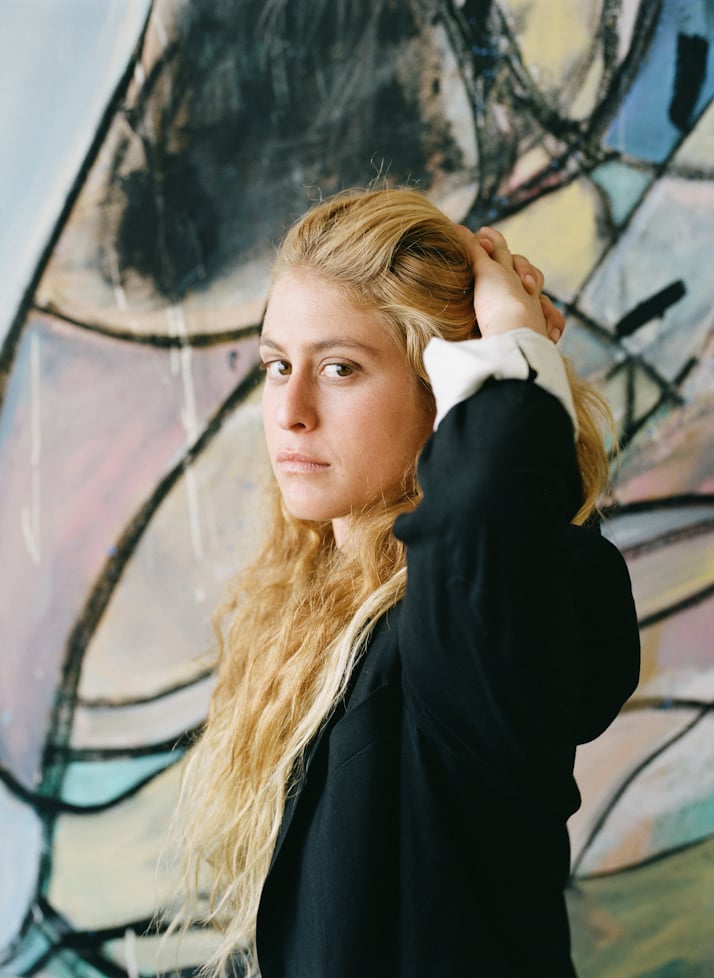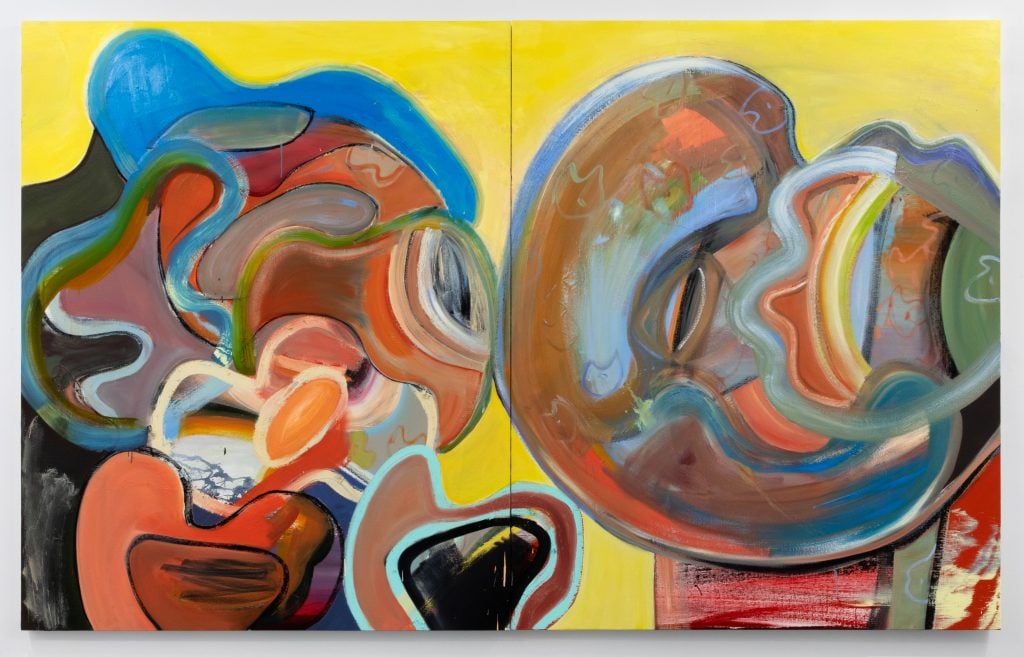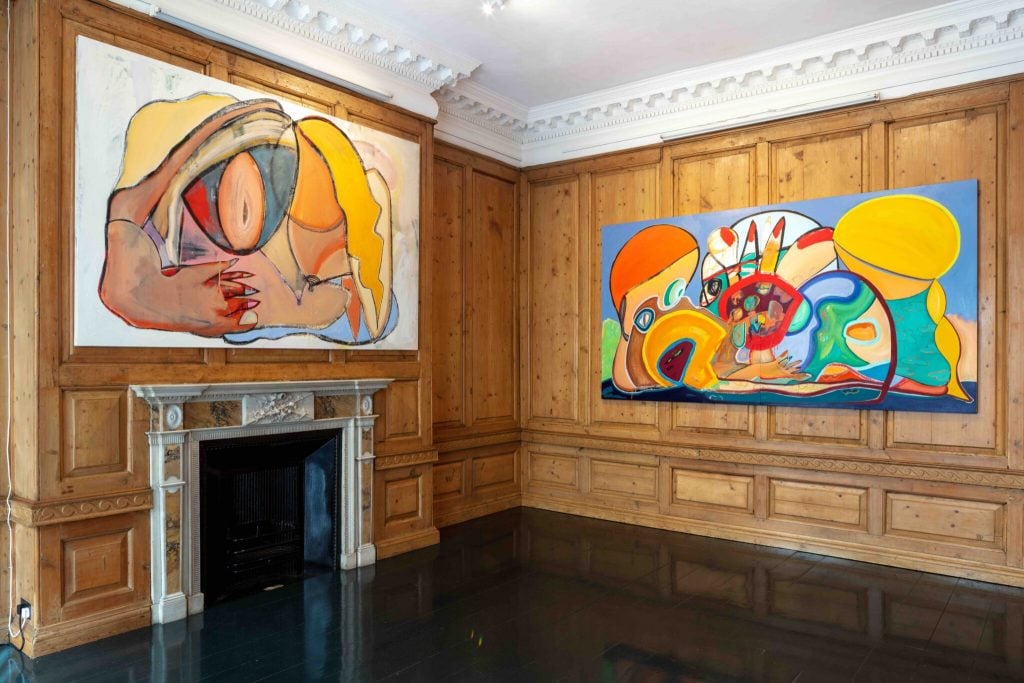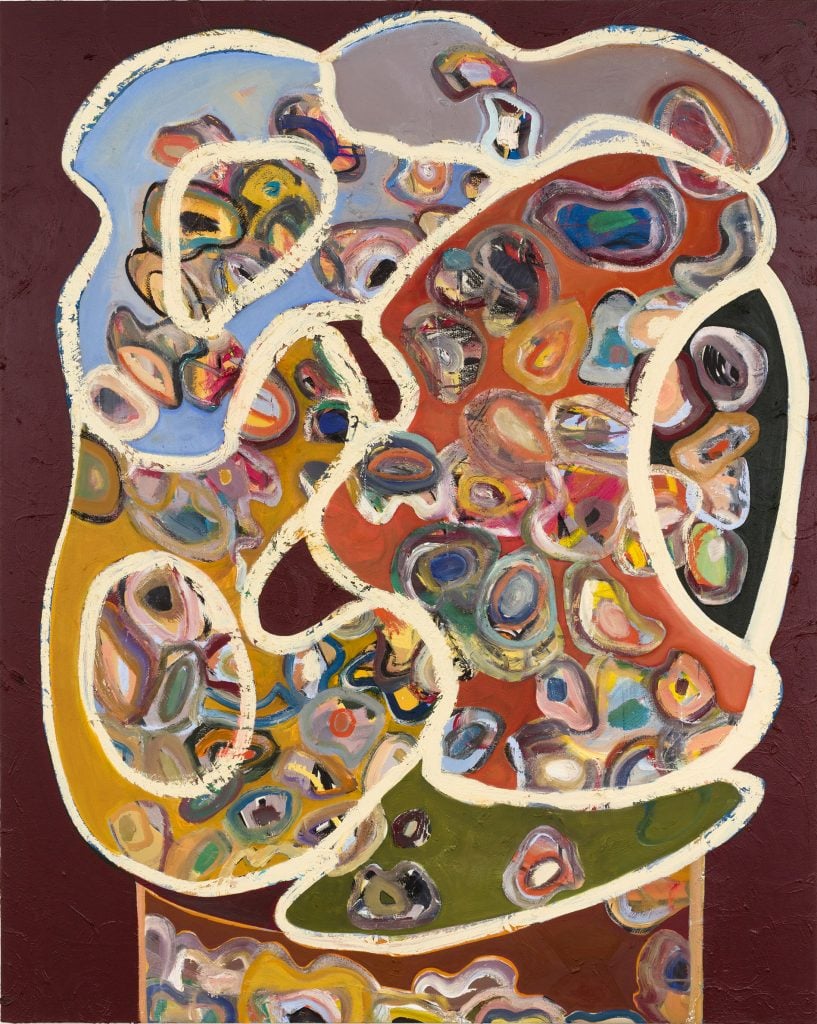People
‘I Re-Evaluate Nearly Everything in My Life’: In a Topsy-Turvy Year, Artist Austyn Weiner Is Focused on Finding Her Painterly Rhythm
Get to know a member of the next generation of emerging artists.

Get to know a member of the next generation of emerging artists.

Maria Vogel

Austyn Weiner has spent the past few years cementing her place as a risk-taker in the art world.
Defying the standards of what buzzy young artists in 2020 should and shouldn’t do to find commercial success, Weiner is highly selective about how her work goes out into the world. This year, for example, she held an exhibition of her sprawling painted artworks in her garage as simultaneous presentations with top galleries across the US and Europe took place.
Above all, Weiner’s work seeks to confront and chronicle the push and pull of her conscious and subconscious choices. Her regimented, daily studio practice is treated as sacred time to expand and grow, both as an artist and as a person.
Fully aware that every day, she is a different version of herself, the Los Angeles-based artist tosses aside expectations and lets her innermost self guide what marks find themselves on the canvas.
Last week, we spoke with Weiner about how she fell into a life dedicated to art, the surprises that came with this year and her hopes for the next one, and her progression as one of her generation’s boldest female painters.
Where is home for you? What is your favorite trait of that place?
Home is a place inside myself. It wasn’t always like that, but it is now. Home for me is in my mind: filled with curiosity, fantasy, exploration, and oftentimes anxiety. Home is warm, safe, nonjudgmental, and wild all the time. The physical place is East Los Angeles… also, wild all the time.

Austyn Weiner, Working Through Not Knowing a Damn Thing About Any Thing (2020). Courtesy of the artist.
Do you remember the moment you knew you’d devote your life to art?
That moment happens all the time. Every time I finish a body of work, and every time I start again, I am left feeling like it is the beginning. I re-evaluate nearly everything in my life, necessarily and unnecessarily, and a moment always arrives when I make a dedication to give this my all, as if I have never been here before.
With that said, the first moment I can recall this inner affirmation happening was age 12. I made an over-exposed print in the dark room of my middle-school photography class. My teacher handed me mod-podge, newspaper, and black paint, and said, “Well, make something of it.” And so I did. That moment gave me my first emotional release via creation. I was feeling distraught and in pain from my older brother’s addiction running rampant again, and I was able to transfer those feelings into a visual expression. I remember getting a rush from it and thinking to myself, “I need this forever.”
How would you describe your work to those unfamiliar with it?
My work is autobiographical: bombastic, sometimes chaotic, cerebral, sensual, repetitious, masturbatory, and raw. The medium is the vehicle for the feelings at hand.
What is your process of making a new work? Is there much preparation or is it a spontaneous act?
My process lends itself to having room for both the calculated and the spontaneous. Words tend to lead me to visuals. I pick up on words anywhere and everywhere: a lyric in a song, my grandmother’s lectures, a taboo text message, a hypothetical love note.
Drawings and doodles also spark inspiration, which leads me to need to see that drawing bigger, and with more of an emphasis on its importance.
Most of the time I approach a painting with no idea as to what it will be. But once in a while it hits like an arrow, and I know exactly what this work needs to become.

Photo courtesy Austyn Weiner.
Do you find it more challenging to begin a work or to finish one?
Beginning a work is easy for me. There is the possibility of everything and the certainty of nothing. I feel free, open, and impermanent. I am attached to nothing. Those are the moments where every voice leaves the room and I can dance like no one is watching. After a certain point in a painting, I begin to want to preserve parts and cherish specific moments of a work, which ultimately leaves me feeling landlocked. The truth is, if I want to push my own boundaries within a painting, then nothing can be precious, and I need to be willing to lose what I have in order to gain something greater. Toward the end of a painting it starts feeling like a puzzle to me, and I have to find that missing piece. The gestures become fewer, but more important, and everything just feels a bit more weighted. I cherish the beginnings of a work and watching the history of moments build up over time.
When you feel stuck or uninspired, what do you do?
The best thing I could do for myself is get out of my own way. I like doing things that are not about me or my practice. Getting in my car and driving to the mountains so I can feel small. Spending time with people who are tapped into a completely different life than mine also greatly fulfils me. Anything and anyone that makes my worries feel small, and my connection to my spirituality feel big, is where and who I tend to gravitate toward.
Has your work always taken on the stylistic approach that it has today?
My work has always had a certain aesthetic approach dating back to my dark room experiments and my first self-portraits. I think I have always been drawn to a confident and seductive aesthetic across any medium I explore. It is more about the gesture, mood, and narrative and what it calls for. And in my case, a mix of hard and soft lines, expressive automatic gestures, and thoughtful, tender moments.

Austyn Weiner, A Song That Is No Longer (2020). Photo courtesy the artist.
Can you describe a major moment of growth that you’ve experienced?
In the first three months of quarantine, I experienced what felt like years of growth. All plans were broken, all self-fulfilling accolades shelved. I was left with nothing but my truth. I felt uninhibited and free to think and create in whatever way I felt fit for that moment. I became extremely attuned to my sensitivity to other people’s energy, and the measurement of time and the anxiety that provokes in me. I learned how to operate independently, and on my own schedule and to feel confident in that notion.
What was your biggest accomplishment of this year and what are you most looking forward to the next year?
My show, “HEAD,” that I mounted in my garage during quarantine was by far my greatest accomplishment of 2020. I had no plans of exhibiting the paintings I had made during that time, but as May approached there was a small window of light at the end of the tunnel where things had begun opening up, and before the horrendous events that were to follow. I opened the show, allowing guests to come in and experience it one by one. Moments that took place in that garage were just so intimate and special. I was exhibiting where I created, and where so much of my quarantine had taken place. It was most people’s first time out of their homes, and I got to share in that experience with them so intimately. Strangers from all over Los Angeles came out to see the show… over 85 people in two weeks! I was the artist, the installer, the gallerist, and everything in between. I loved every moment of it.
My expectations for the world in 2021 are none at all. Personally, I would rather be pleasantly surprised than let down! However, I have big aspirations when it comes to my work, and the expansion of my process. I am looking forward to exploring new media, and new modes of painting and expressing myself via writing, sculpture, and design. I am loving the head space I am in right now, and I look forward to protecting it and expanding upon it.